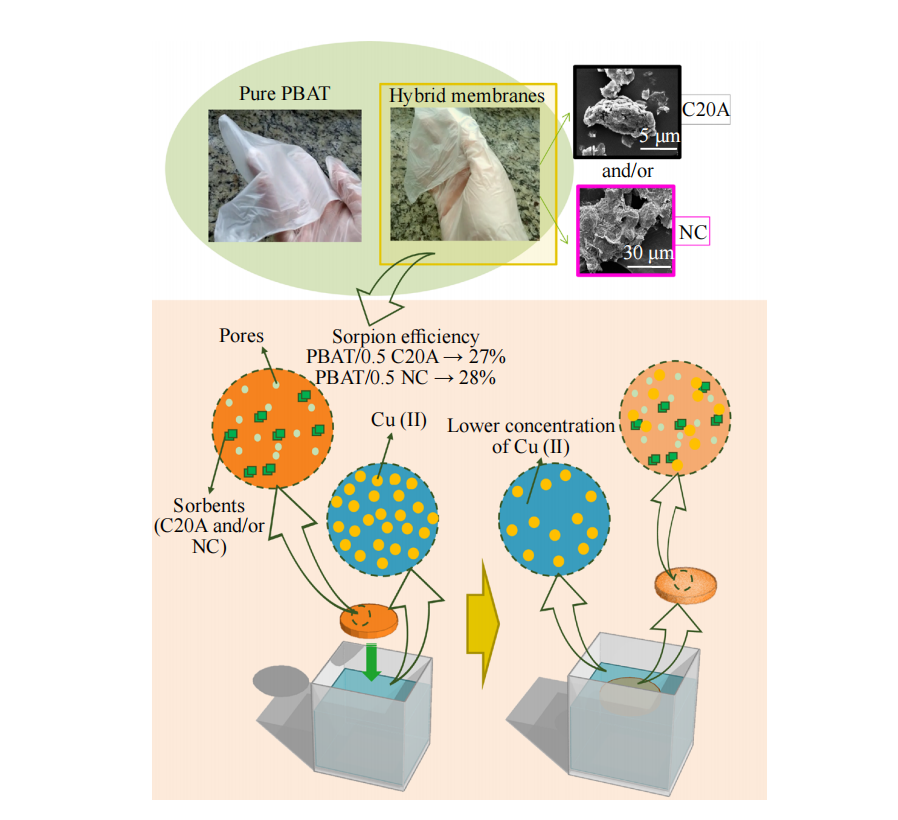Enhancing the Cu (II) Removal in Water Using Functional Hybrid Membranes
DOI:
https://doi.org/10.37256/sce.5220244351Keywords:
membranes, water treatment, curcumin, cloisite 20AAbstract
This work developed hybrid EIPS/NIPS membranes of poly (butylene adipate-co-terephthalate) (PBAT) with nanocurcumin (NC) and/or Cloisite 20A (C20A). The dispersed phases were characterized by dynamic light scattering (DLS), ζ potential, X-ray diffractometry (XRD), scanning electron microscopy (SEM), and Fourier-transform infrared spectroscopy (FTIR), while XRD, SEM, FTIR, mechanical properties, contact angle, and copper sorption were evaluated for the composite membranes. DLS analysis indicated that the dispersed phases present a nanometric size distribution; ζ potential measurements showed low electrostatic stability, explaining the agglomeration effects observed. Pure PBAT membranes presented macro-pores throughout their structure, which showed a slight size reduction with the inclusion of NC and C20A. The membranes' mechanical performance was affected by the presence of the pores that functioned as stress-concentrating defects, and the inclusion of the dispersed phases increased the elastic modulus and tensile strength, especially for PBAT/0.5% C20A, with values of 18.7 and 8.9% higher than those of pure PBAT, respectively. Hybrid EIPS/NIPS membranes showed a hydrophilic nature, with all the contact angle measurements lower than 90°. The sorption tests using a high-concentration copper solution (1,000 mg/L) showed a removal of around 25%. These results highlighted the development of new eco-friendly membranes using NC and C20A as dispersed phases with the potential to remove toxic elements from water.

Downloads
Published
How to Cite
Issue
Section
License
Copyright (c) 2024 Noelle C. Zanini, Rennan F. S. Barbosa, Alana G. de Souza, Rafaela R. Ferreira, Paulo H. Camani, Sueli A. Oliveira, Daniella R. Mulinari, Derval S. Rosa

This work is licensed under a Creative Commons Attribution 4.0 International License.

